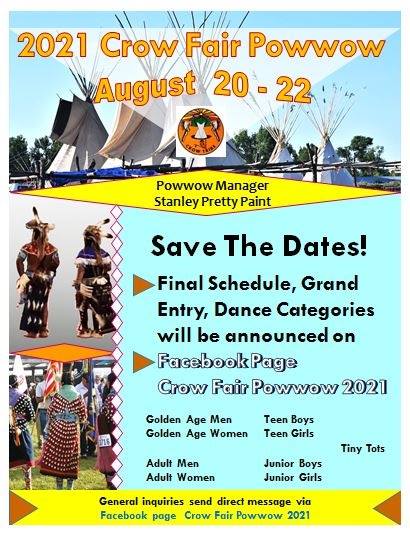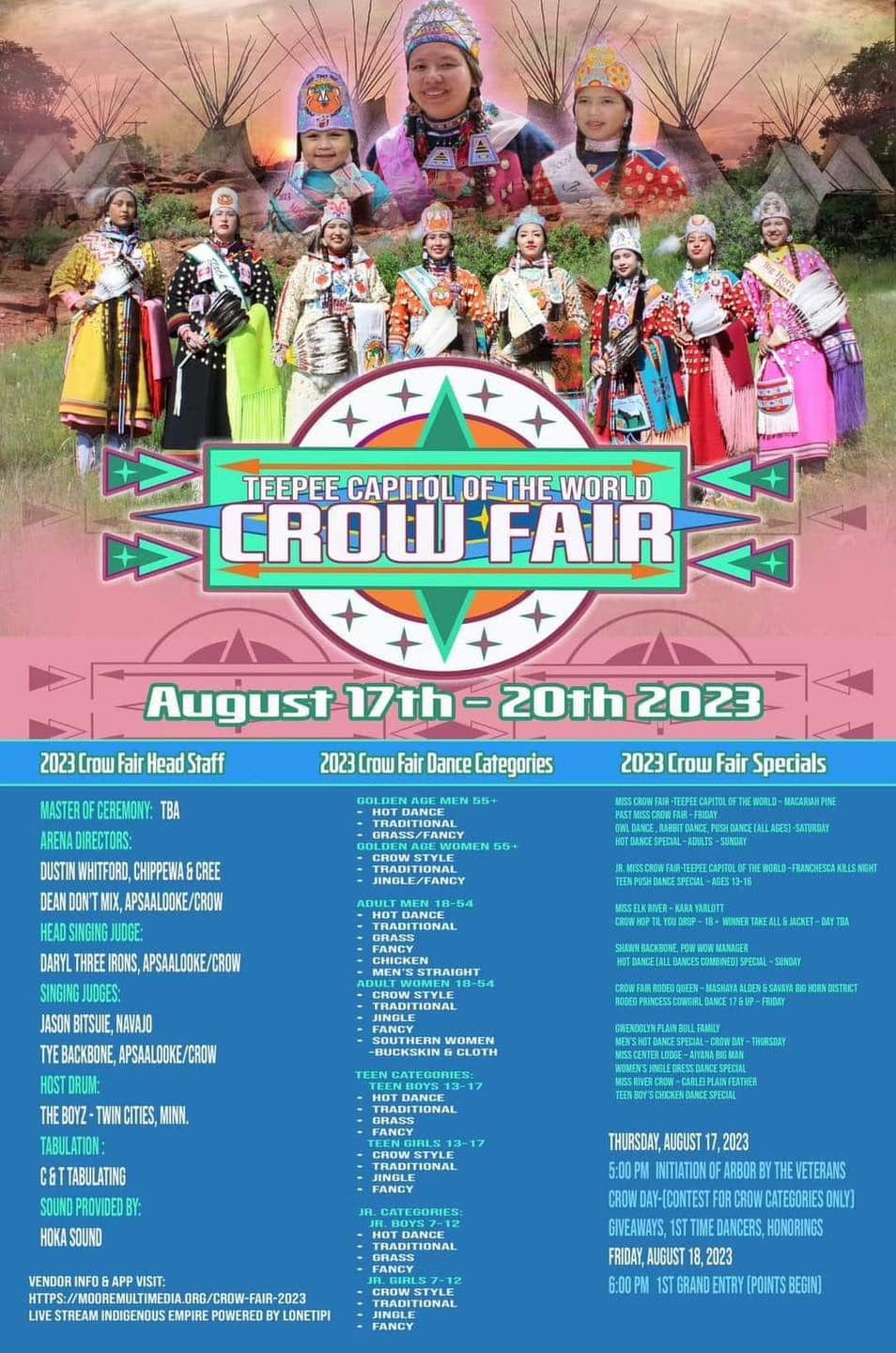
The Teepee Capital of the World: Unpacking the Enduring Spirit of Crow Fair, Apsáalooke Homage
CROW AGENCY, MONTANA – As the relentless Montana sun begins its late summer descent, painting the vast plains in hues of gold and amber, an extraordinary transformation unfolds on the Crow Indian Reservation. Thousands of tipis, their conical forms reaching skyward, dot the landscape, transforming the open expanse into what is affectionately known as "The Teepee Capital of the World." This is Crow Fair, an annual celebration that transcends the typical definition of a fair or powwow. It is a homecoming, a spiritual renewal, a vibrant assertion of Apsáalooke (Crow people) identity, and a profound living testament to tradition.
More than just an event on a calendar, Crow Fair is an immersive cultural experience, a multi-day spectacle that draws tens of thousands of visitors from across the globe and serves as the largest gathering of the Crow Nation. While its exact dates can vary slightly year to year, Crow Fair traditionally kicks off in mid-August, often beginning the third week of the month, and culminates over the Labor Day weekend. This extended duration, typically spanning five to seven days, allows for a comprehensive array of events and provides ample time for families to reunite, stories to be shared, and traditions to be reinforced.

A Legacy Forged in Resilience: The Roots of Crow Fair
Established in 1904 by the Crow Tribal Council, with the encouragement of the U.S. government, Crow Fair was initially conceived as an agricultural fair designed to promote farming among the Crow people. However, the ingenious Apsáalooke quickly transformed it into something far grander: a powerful vehicle for cultural preservation and communal solidarity. It became a space where traditional dances, songs, horsemanship, and social customs, once suppressed, could flourish openly.
"Crow Fair isn’t just a fair; it’s our annual affirmation," explains Clifford Birdsong, a tribal elder whose family has camped at Crow Fair for generations. "It’s where we reconnect with our ancestors, our language, and our values. Every tipi, every drumbeat, every dance step tells a story of survival and strength."
The sheer scale of the tipi encampment is a sight to behold. Each morning, as the sun rises over the Little Bighorn River, the smoke from countless cooking fires curls upwards, carrying the scent of traditional foods across the sprawling village. Families gather around these fires, preparing meals, sharing laughter, and telling stories, embodying the communal spirit that defines the Apsáalooke.
The Heartbeat of the Nation: Dates and Core Events
While the precise schedule for each year’s Crow Fair is released closer to the event, the core components remain steadfast, drawing participants and spectators into a whirlwind of activity from dawn till dusk.
1. The Powwow: A Kaleidoscope of Sound and Motion
The Crow Fair Powwow is the undisputed centerpiece, a mesmerizing display of Indigenous dance, drumming, and singing. Held daily, often with afternoon and evening sessions, the powwow arena becomes a vibrant stage for dancers adorned in elaborate, handcrafted regalia. Categories range from the powerful Grass Dance and the intricate Fancy Dance for men, to the graceful Jingle Dress Dance and traditional Women’s Buckskin Dance.

The Grand Entry, held daily, is a breathtaking spectacle. Thousands of dancers, led by tribal elders, veterans, and royalty, process into the arena, their regalia shimmering under the Montana sun. The air vibrates with the thunderous beat of multiple drum groups, their synchronized rhythms providing the heartbeat for the dancers. Each drum group comprises singers whose powerful voices carry ancient songs, often telling stories of bravery, nature, and community.
"When you step into the arena during Grand Entry, you can feel the energy, the history, the spirit," says Sarah Little Star, a Fancy Shawl dancer who has competed since childhood. "It’s not just about winning; it’s about honoring our traditions, showing respect for our ancestors, and inspiring the next generation." The competitive aspect of the powwow is fierce, with dancers and drum groups vying for prize money, but the underlying spirit is one of camaraderie and cultural pride.
2. The Crow Fair Rodeo: Thunder on the Plains
Complementing the spiritual grace of the powwow is the raw, exhilarating power of the Crow Fair Rodeo. Held in the expansive rodeo grounds, this event is a testament to the Crow people’s deep connection to horses and their storied history as expert horsemen. The rodeo features traditional events like bull riding, barrel racing, and steer wrestling, showcasing the skills of cowboys and cowgirls from across Indian Country and beyond.
However, the undeniable highlight of the rodeo is the Indian Relay Race. Often described as the oldest extreme sport in North America, the Indian Relay is a thrilling, high-stakes competition unique to Native American culture, particularly among Plains tribes. Teams of three to four bareback riders, each with a string of three or four horses, race around a track, exchanging horses at breakneck speed after each lap. The exchange itself is a display of incredible athleticism and coordination, as riders leap from one galloping horse to another, often with only a single rope or reins to guide them. The dust, the speed, the thundering hooves, and the roar of the crowd create an electrifying atmosphere that is unparalleled.
"The Indian Relay is in our blood," states John Runsabove, a veteran relay rider. "It’s a direct link to our warrior past, to the days when horses were everything. It takes courage, skill, and a deep understanding of your horse. It’s pure adrenaline, but it’s also a dance with tradition."
3. The Daily Parade: A Moving Museum of Culture
Each morning, usually around 10:00 AM, the main road through the encampment transforms into a vibrant, moving museum of Crow culture: the Daily Parade. This isn’t your typical municipal parade; it’s a profound display of identity and heritage. Participants, many on horseback, don exquisite traditional regalia, some passed down through generations. War bonnets, intricately beaded dresses, painted shields, and featherwork are showcased with immense pride.
Families ride together, children perched proudly on ponies, embodying the continuity of Apsáalooke life. The parade offers a unique opportunity to witness the Crow people’s deep reverence for their history, their horses, and their traditional attire. It’s a living snapshot of a resilient culture, defying the passage of time.
4. The Encampment Life: The Soul of the Fair
Beyond the scheduled events, the true essence of Crow Fair lies within the encampment itself. This sprawling tipi village is where families reconnect, where elders share wisdom with the young, and where the daily rhythm of Crow life unfolds. Visitors are often welcomed into the camps, offered frybread and coffee, and invited to witness the communal spirit firsthand.
Evenings are often filled with social dances, hand games, and impromptu gatherings around campfires. The air hums with the sounds of laughter, storytelling, and the occasional distant drumbeat. It’s a time for healing, for celebration, and for reinforcing the bonds that hold the Crow Nation together.
Beyond the Spectacle: Cultural Immersion and Respect
For visitors, Crow Fair offers an unparalleled opportunity for cultural immersion. However, it is crucial to approach the event with respect and mindfulness. Photography of individuals should always be done with permission, and certain ceremonial areas may be off-limits. The Crow people are generous in sharing their culture, but this generosity should be met with reverence and an understanding that this is not just a performance, but a deeply significant spiritual and social gathering.
Food vendors offer a taste of traditional Native American cuisine, including popular items like Indian tacos and frybread. Arts and crafts vendors showcase intricate beadwork, quillwork, jewelry, and other handcrafted items, providing an opportunity to support Indigenous artists directly.
The Enduring Legacy
Crow Fair is more than just a summer event; it is a vital artery through which the lifeblood of the Apsáalooke people flows. It ensures the continuity of language, ceremony, and social structures. In an ever-changing world, it stands as a powerful beacon of resilience, reminding all who attend of the enduring strength and vibrant beauty of Indigenous cultures.
As the final drums fade and the tipis are slowly dismantled, leaving only the circular imprints on the earth, the spirit of Crow Fair lingers. It is carried in the hearts of the Apsáalooke people, sustaining them until the following August, when the "Teepee Capital of the World" will once again rise, welcoming all to witness the enduring spirit of the Crow Nation. For anyone seeking to understand the heart of Native American culture, a pilgrimage to Crow Fair is not just an event to attend, but an experience to live.


